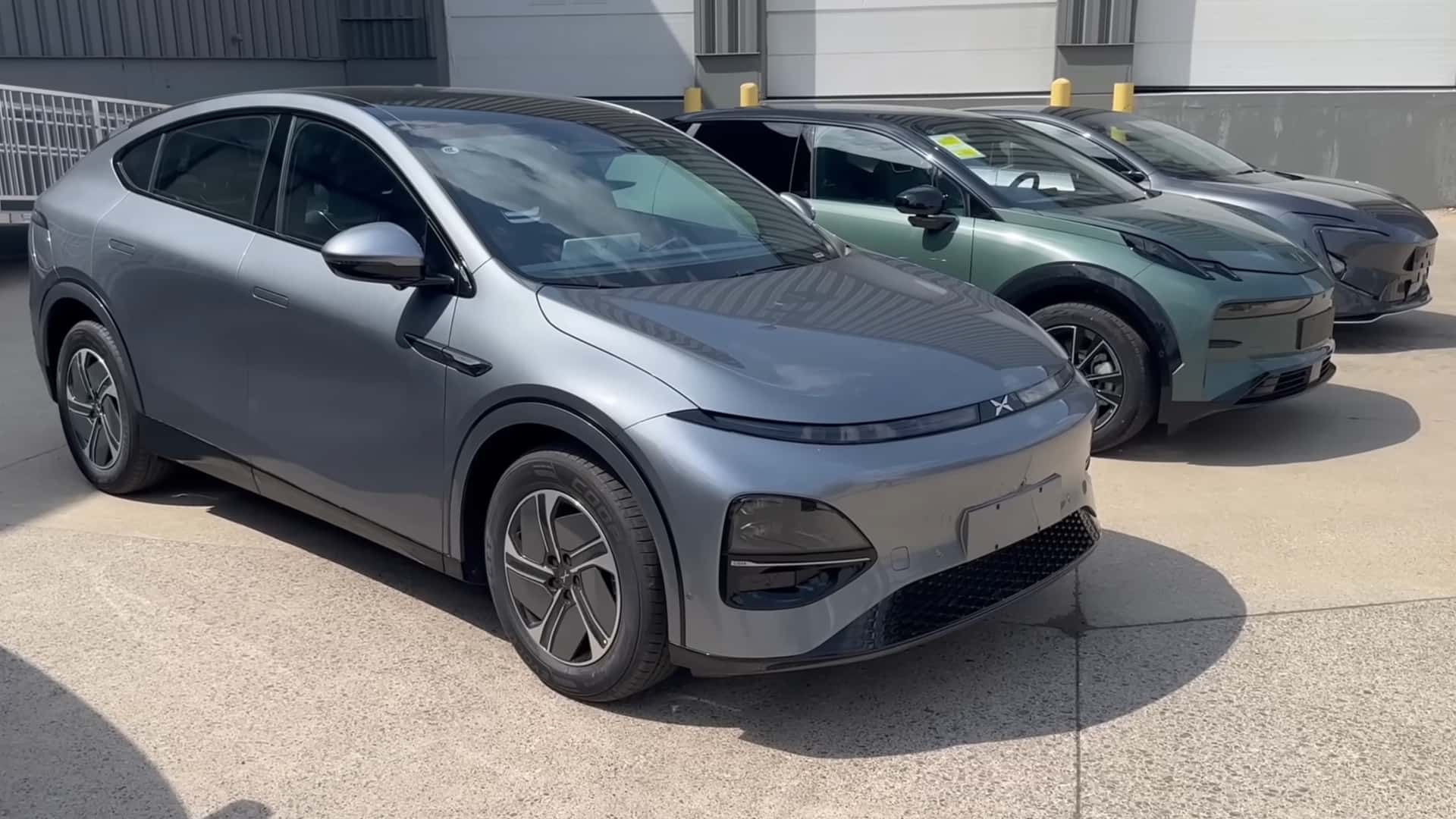US test of three Chinese electric vehicles: ‘It’s a wake-up call’

The threat of cheap but high-quality Chinese electric cars is scaring the pants off the global auto industry. The US recently said it would raise tariffs on the vehicles to 100%, effectively banning them from US soil for the time being. The European Union plans to raise tariffs as well, and Bloomberg learned Thursday that Canada is strongly considering doing the same.
But how good are these Chinese EVs, really? Are they a real threat to legacy automakers around the world – or is it a big political post? Most Americans—and most American journalists, for that matter—have no way of familiarizing themselves with these cars and seeing what it is. So it’s a real treat when Western automotive experts get to grips with Chinese electric cars and share their impressions with the rest of us.
China makes some great electric vehicles
China has emerged as the dominant global force in electric vehicles, thanks in part to aggressive industrial policies that poured billions into EV and battery production. Its cars are very competitive in both cost and quality, reviewers say. But new increased tariffs in the US aim to keep Chinese electric vehicles off American roads.
Caresoft, a Detroit benchmark company, imported three Chinese electric vehicles of different sizes, brands and price points and invited John McElroy from Autoline News to take them for a spin.
McElroy’s verdict: “This is a wake-up call to all legacy automakers around the world.”

Chinese vehicles weren’t just well-built, fun to drive and full of impressive technology. They also cost much less than a comparable EV in the U.S. Here, EVs still tend to be more expensive than gasoline vehicles, with the average new electric car changing hands for about $56,648 in May.
Caresoft president Terry Woychowski – whose job it is to help car companies understand the competition – said Chinese cars offer a lot of bang for the buck. The idea that Chinese products are inherently inferior or cheaply made has gone completely out the window.
“At the price point they have, and if you look at the quality they offer, it’s really great quality,” Woychowski said. “It’s a great value at this price.”
(See the specs and prices of the cars tested below, as quoted by Autoline. Note that the range figures are based on China’s testing procedure and are not the same as the US EPA numbers.)
| The vehicle | XPeng G6 | Zeekr X | Avatar 12 |
| Car training | AWD | AWD | AWD |
| Power | 480 horsepower | 422 cf | 569 cf |
| Battery capacity | 87.6 kWh | 69 kWh | 94.5 kWh |
| Range | 434 miles | 310 miles | 403 miles |
| MSRP | $32,317 | $30,692 | 55667 dollars |
Of the three cars profiled, perhaps the best showcase of this value is the Zeekr X, a compact crossover made by the Geely Group, which also owns brands you may have heard of like Volvo and Polestar. It’s closely related to the Volvo EX30, but apparently with better specs. (Our own Kevin Williams also reviewed the Zeekr X, if you want a deeper dive.)

This Zeekr X carries an MSRP of $30,692, a price point that is hard to find in the US EV market. Additionally, the X offers luxury appointments like a head-up display, a suede-like material on the pillars and doors that open and close electronically at the push of a button. The center console, which can slide electronically forwards and backwards, also has cooling and heating functions. The Zeekr X also has a large central touchscreen that can slide across the dash for easier access from the front passenger.
You’d be hard-pressed to find many of these things in true luxury cars in the U.S. And yet, the Zeekr X costs about as much as any average grocery store in the U.S.
“That’s why the legacy automakers are so afraid of what’s coming out of China,” McElroy said.
The car ran well, too, McElroy said. He noticed some rattling from the interior in previous Tesla Model Y and XPeng G6 tests, but not in the Zeekr. “This car is rock solid,” he said.
It’s basically the same value story as the other cars tested by McElroy and Woychowski.

At $32,317, the XPeng G6 SUV costs $5,000 less than a Model Y, a direct competitor. However, it drives almost as well as a Tesla, has a more interesting interior and is comfortable, McElroy said. While the Model Y cuts costs by having a single central display, the XPeng also serves up a digital gauge cluster behind the wheel.
“I think Xiaopeng has a real, serious Model Y competitor here,” he said.

Meanwhile, the $55,667 Avatr 12 sedan offers a luxurious Napa leather interior, a full-width 34-inch screen along the lower portion of the windshield, and lie-flat seats. Plus, it comes equipped with a 900-volt system for extra fast charging (most US-market cars run on 400 volts) and cameras instead of side mirrors (which aren’t legal in the US).

Overall, the test says a lot about how far ahead Chinese carmakers are in cost. As Western automakers struggle to increase EV production volumes and lower costs for consumers, Chinese companies are already there—thanks in part to aggressive industrial policies that poured billions of dollars into EV production and supply chains. They are able to make vehicles that are cheap and packed with features. For more proof of this, look no further than the nearly $10,000 BYD Seagull hatchback.
The comparison also underscores how different Chinese consumers are from American ones — and how Chinese dominance in every major car market is far from guaranteed.
Self-opening doors and refrigerated compartments are nice and all, but is that what Americans want? For Chinese car companies to steamroll into the US market – as policymakers claim if an opening is to be made – they will have to adapt their know-how to an entirely new kind of customer. This is easier said than done.
Correction 6/21 8:45 PM ET: Updated to remove incorrect Tesla Model Y specs.
Contact the author: tim.levin@insideevs.com


